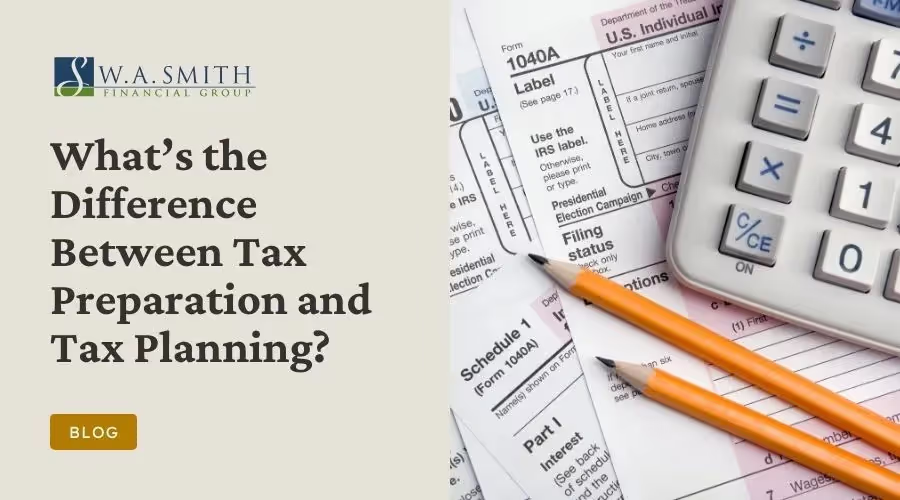






Get a clear look at what you’re paying and how much risk you’re taking. This complimentary review helps identify your portfolio’s costs, risk exposure, and opportunities to better align your investments with your goals — all with no obligation.
Get Started
Why do some people breeze through tax season while others feel overwhelmed by paperwork and deadlines? It often comes down to one key factor: understanding the difference between tax preparation and tax planning. Let’s jump in!
Tax Preparation
Tax preparation is the process of gathering documents—like W-2s, 1099s, and receipts—and filing your return by the tax deadline. This step is reactive, focusing on calculating taxes owed or due after the tax year ends. Think of it as tying up loose ends for the previous year, often with the help of a tax professional or software.
Tax Planning
Tax planning, on the other hand, is a proactive strategy. It involves analyzing your income, investments, and deductions throughout the year to minimize your tax burden. With tax planning, you’re not just responding to the IRS—you’re taking control of your financial future by strategically preparing to reduce taxes before tax season begins.
It’s like having a game plan before stepping onto the field: preparation tackles the immediate task, while planning helps you achieve better long-term outcomes.
Proactive tax strategies allow you to make smarter financial decisions throughout the year. For example:
By taking steps early, you can minimize tax surprises and keep more of your hard-earned money.
A well-thought-out tax plan doesn’t just save money—it reduces stress and sets you up for long-term success.
So, What’s Your Approach?
Are you ready to move from tax preparation to proactive tax planning? The difference could mean more confidence and savings—not just this year, but every year going forward. Schedule your Retirement Tune-Up™ today to see how a personalized tax plan can fit into your financial strategy.